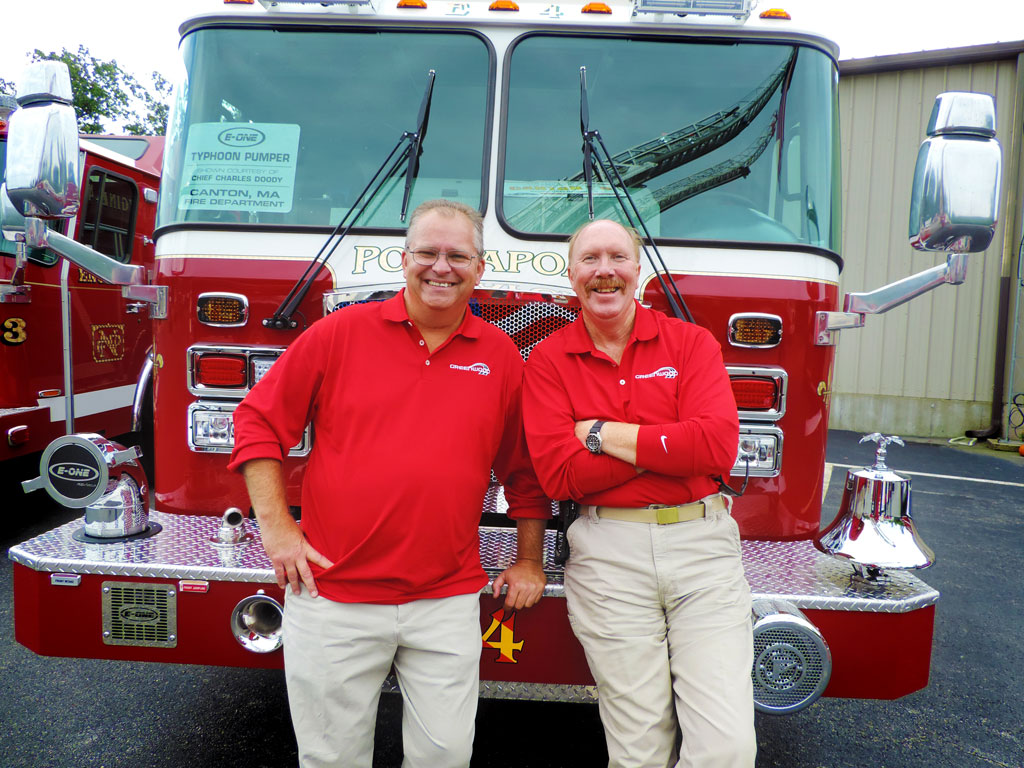-
Fire Apparatus Training
This program is designed to improve the knowledge and skills necessary for firefighters that operate fire department apparatus. The training is conducted at your department’s location and can include on- duty and /or off -duty personnel.
Give our Training Department a call today!
508-809-9814
TRAINING INSTRUCTORS
Instructors: Greenwood Emergency Vehicles Instructors have acquired NFPA certifications, Emergency Vehicle Technician Certifications, and are State Fire Academy Instructors
Meet Our Team
AVAILABLE TRAINING CLASSES
ABOUT US
Fire Apparatus Driver Training can be customized to your departments needs and is designed for both new and veteran members of your department.

Greenwood’s dedicated team of instructors have over 100 years of combined experience in the Fire Service, as both firefighters and instructors. Greenwood Instructors know E-One because they operate E-One apparatus within their own departments.
Greenwood instructors are Massachusetts and Rhode Island Fire Academy Instructors, have multiple NFPA certifications, Emergency Vehicle Technician certifications and college degrees.
Firefighters completing the training will receive a Certificate from Greenwood Emergency Vehicles Training Division.
We are available to meet with your insurance carrier to determine if the Fire Apparatus Driver Training program meets their Driver Training Course Discount Requirements
Program administered by:
Ken Brousseau
Director of Training
Greenwood Emergency Vehicles
This program is designed to improve the knowledge and skills necessary for firefighters that operate fire department apparatus.
The training is conducted at your department’s location and can include on- duty and /or off - duty personnel.
FIRE APPARATUS TRAINING
LICENSES
Commercial Driver’s License – Class B: Endorsements: Air Brakes, Tanker, Passenger
CERTIFICATIONS
NFPA 1002 Apparatus Driver/Operator – Pumper : Pro Board Certified
NFPA 1002 Apparatus Driver/Operator – Aerial : Pro Board Certified
NFPA 1041 Fire Service Instructor : Pro Board Certified
NFPA 1521 Incident Safety Officer : Pro Board Certified
Emergency Vehicle Technician: F-1 Maintenance & Inspection
Emergency Vehicle Technician: F-2 Design & Performance
Emergency Vehicle Technician: F-5 Aerial Fire Apparatus
Frequently Asked Questions
No. Active Regeneration should only be done when the REGEN lamp is illuminated (Solid or Flashing). – Most emergency vehicles require active regeneration to remove the soot. There are two methods: – Stationary (parked) regeneration 30 to 60 minutes. – Mobile regeneration (driving the vehicle at highway speed) 30 minutes average.
There are (3) designated warnings before possible engine or DPF damage will occur. – The first indication a regeneration process is needed will be a solid illuminated REGEN lamp. Once the first stage is reached it is expected you will have 4 to 6 hours before the second warning stage. – If no action is taken, the second stage warning indication will be a flashing illuminated REGEN lamp. It is expected that you will have 2 to 4 hours before the third warning stage. – If no action is taken, the third stage warning indication will be a solid illuminated REGEN lamp and an illuminated CHECK ENGINE lamp. At this stage you will have 1 to 2 hours before the STOP ENGINE lamp is illuminated – Summary, from the first stage (REGEN lamp solid) to the last stage (STOP ENGINE lamp solid) it is anticipated to be 8 hours plus.
The Aerial PTO switch should be engaged as follows: – Vehicle stopped with parking brake applied. – Transmission selector in neutral – Vehicle engine speed at base idle – Engage PTO rocker switch.
– Any passenger or equipment compartment is not closed. – Any telescoping quartz light is not in the stowed position. – Any telescoping deck gun is not in the stowed position. – Any hose bed door is open. – Any other device that is permanently attached to the apparatus is open, extended, or deployed in a manner that is likely to cause damage to the apparatus if the apparatus is moved.Note: If the operator sees the Hazard Light flashing he should check the E-ONE E-Logic screen to determine the status of the monitored systems. Aerial apparatus have a corresponding amber hazard light that denotes that the jacking system is deployed. ~IF EITHER LIGHT IS FLASHING DO NOT MOVE APPARATUS UNTIL SYSTEMS ARE RESTORED TO STOWED POSITIONS OR ALL DOORS ARE SECURED.


.jpg)
.jpg)
.jpg)
.jpg)
.jpg)
.jpg)
.jpg)
.jpg)
.jpg)
.jpg)
.jpg)
.jpg)
.jpg)
.jpg)
.jpg)
.jpg)
.jpg)
.jpg)
.jpg)
.jpg)
.jpg)
.jpg)
.jpg)
.jpg)
.jpg)
.jpg)
.jpg)
.jpg)
.jpg)
.jpg)
.jpg)
.jpg)
.jpg)
.jpg)
.jpg)
.jpg)
.jpg)
.jpg)
.jpg)
.jpg)
.jpg)
.jpg)
.jpg)
.jpg)
.jpg)
.jpg)
.jpg)
.jpg)